We archivists have it all--the opportunity to share the spark of discovery with our patrons; the calming scent of old, pungent books; engaging in conversations and debates about historical minutiae; the comforting hum of microfilm as it speeds through the reader; erasing and writing with pencils; and behind-the-scenes access to history. All kinds of history...
So when brand-new, unheard of, undocumented (at least in our collections) historical nuggets come across the radar of our staff, we are surprised and intrigued to say the least. As the one-stop shop for records of North Dakotans and their activities, we are driven to collect these nuggets so they aren't lost.
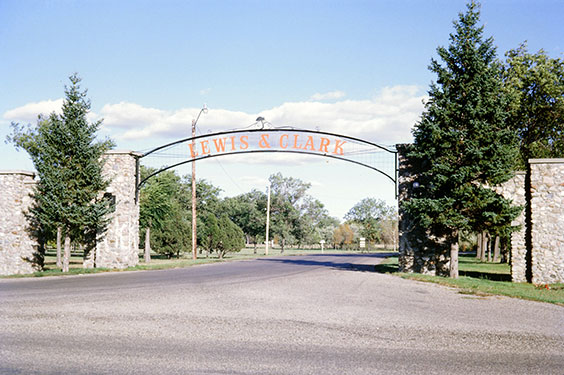
11325-00005 Entrance to Camp Lewis and Clark, Bismarck (N.D.), 1968.
Once such nugget was recently discovered, and we are in hot pursuit of any and all documentation for posterity: in 1968, Camp Lewis and Clark (now the United Tribes Technical College) in BISMARCK was a training site for Peace Corps volunteers who went on to direct agricultural and land settlement projects in KENYA. These recruits came from all over the country, including some of the top universities, and were immersed in rigorous Swahili language training. Swahili is an incredibly complex language, where the subject, object and verb are collapsed, the tense structure is unlike that of the English language, time is treated differently, and there are eight genders. Those are just a few of the nuances that make it an especially difficult language to learn.
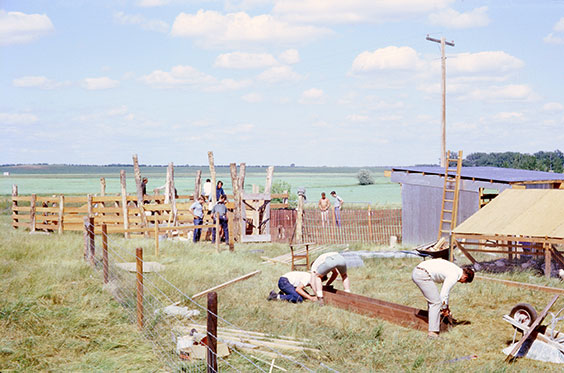
11325-00006 Work crew, Camp Lewis and Clark, Bismarck (N.D.), 1968.
Kenyan instructors had to devise effective teaching strategies to introduce this brand new language to Americans in a short amount of time. One of the immersion techniques was to ban the use of English from 6 a.m. until midnight. Those caught speaking English during those hours were eliminated from the program.
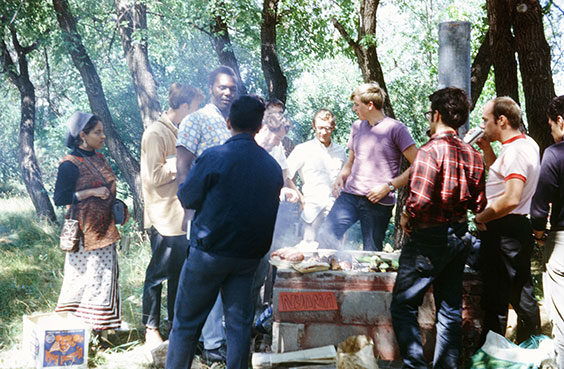
11325-00007 Lamb barbecue, Camp Lewis and Clark, Bismarck (N.D.), 1968.
In addition, of the young men trained to carry out their responsibilities in Kenya, half focused on agriculture and the other half on establishing cooperative societies. The newly formed Republic of Kenya wanted to populate and use the fertile farmland that had recently been sold back to them by the British government. To this end, the Bismarck trainees honed skills related to range management, engineering, construction of water systems, and many others.
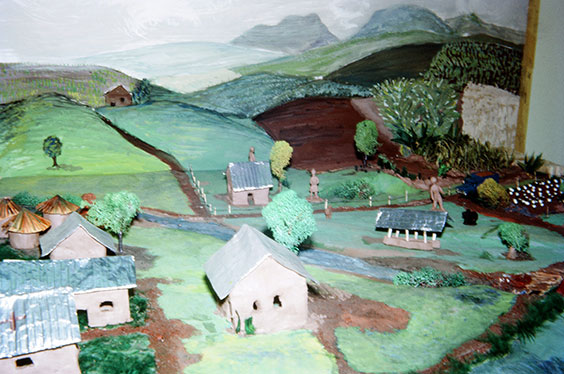
11325-00008 Land cooperative model developed by crew at Camp Lewis and Clark, Bismarck (N.D.), 1968.
The three-month training took place in Bismarck, selected by planners because it was remote enough to eliminate distractions, and could also provide a culture shock to prepare the young men for life in a foreign country. One participant from the east coast described the training in Bismarck as an "exotic experience in its own right before we embarked on life in Kenya." The cross-cultural experience went both ways: for many Bismarck residents, the Kenyan instructors were the first African people they had met.
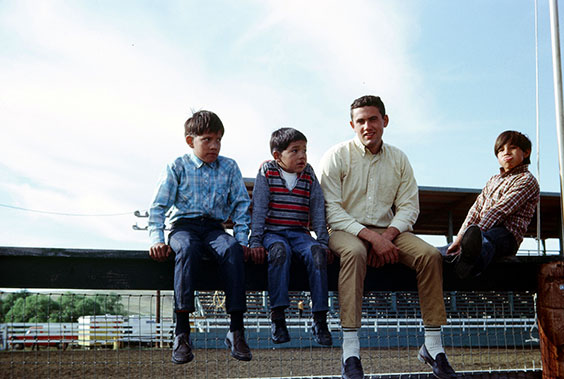
11325-00010 Alan Johnston with Edgar, Edmund and Larry Fasthorse at the rodeo during his stay at the Standing Rock Indian Reservation, 1968
As part of the training, volunteers were sent to the Standing Rock Indian Reservation to live with families for two weeks. This was intended to provide an introduction to life as a visitor in a different community and culture.
There were several psychologists on staff, observing the volunteers and determining who was fit to move on to perform their duties. Several volunteers either quit the program or were eliminated. The motivations of volunteers varied widely; serving in the Peace Corps deferred, but did not exempt, these men from being drafted into the Vietnam War. One participant remembered sitting with his team in Kenya listening to the lottery numbers being announced over the radio, hoping his number would not be called. Several from the group were drafted and went on to serve in Vietnam.
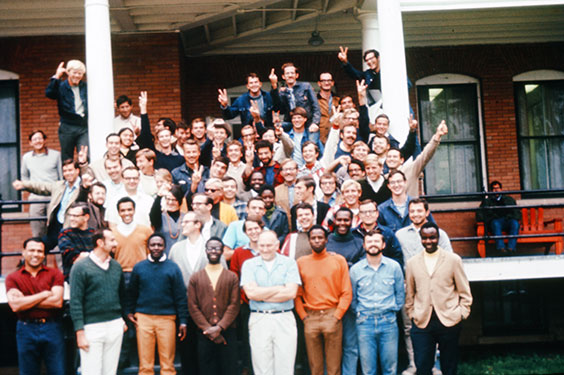
11325-00011 Trainers and volunteers at Camp Lewis and Clark, Bismarck (N.D.), 1968
Another volunteer remembered the political atmosphere of summer 1968, particularly the politics surrounding protests at the Democratic National Convention. His stay with a family at Standing Rock was memorable, as they watched the protests on television together and discussed their views afterwards.
The participants that I spoke with remember their experiences fondly and vividly. The group maintains contact, and they are celebrating their 50 year reunion next summer. One member is a documentary filmmaker who is currently working on two films: one about the training experience and the other about the Peace Corps time and its context (Vietnam war, Kenya after independence).
The State Archives has worked with the members of the project. We are building a manuscript collection (MSS 11325) to document the unique role that Bismarck played in this international project. The collection currently includes a booklet and syllabus for trainees, as well as photographs taken at Camp Lewis and Clark, Standing Rock, and Kenya. The collection is available to the public, and we are actively seeking documentation to add to help preserve this fascinating story.

